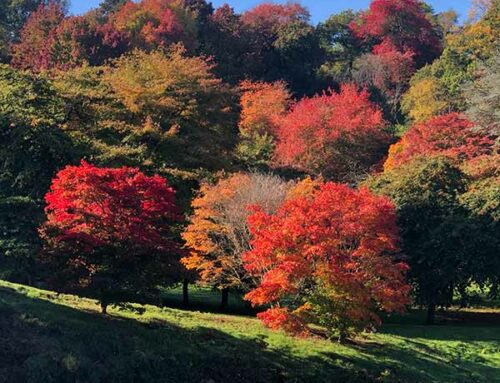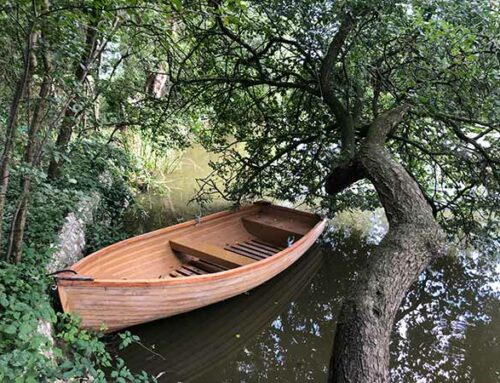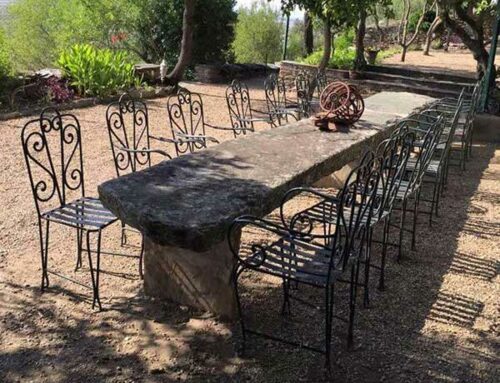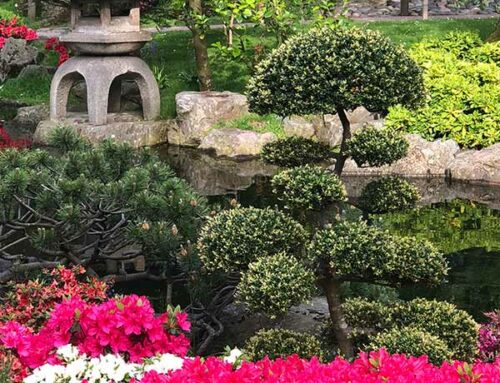By Lucas Mariconda
We had the great pleasure of visiting this ancient Villa and its amazing gardens in July. The Villa D’este Gardens in Tivoli were created in the 16th century and are a splendid example of Italian Renaissance architecture. We saw some of the most marvellous water features ever built in a garden. The garden itself is set high up in the mountains just outside Rome, where the climate is just a tad cooler and the views from the gardens simply wondrous. Today the Palace & Gardens are a UNESCO world heritage site.
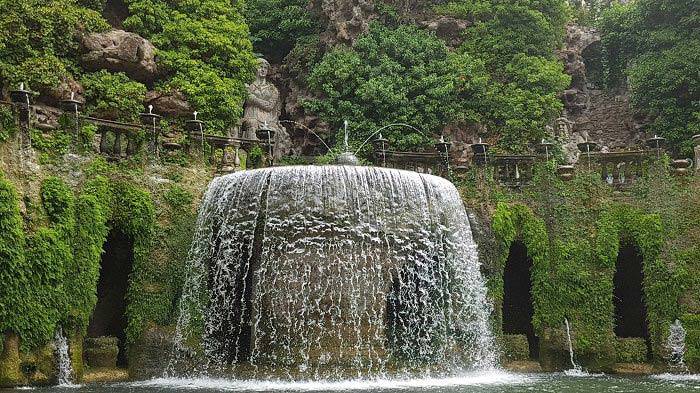
The Villa D’Este Gardens are particularly famed for astonishing water features
The Villa D’Este Gardens are a testament to its owner’s decadence and taste for luxury. Today, 500 years later, it is still marvelled at as a gardening wonder of the world. The combination of the water features (which are gravity fed with some jets of water reaching 15 metres up into the air), the Italian cypresses and evergreen jasmines (Trachelospermum Jasminoides), evergreen Magnolia and other sizeable, stunning specimen plants from Italy and around the world will leave you speechless.
The history of the Villa and the gardens are linked to the Este family, who were a powerful and wealthy banking family with close links to the French kings. The Villa was built by Cardinal Ippolito II, who had big ambitions to become the next Pope of the Roman Catholic Church. Thanks to his wealthy family and the positions he had been granted by the French King as well as financial backing from Lucrezia Borgia (whose family produced 3 Popes), Ippolito had an enormous amount of money to spend and set about the task of building the Villa. Thanks to a plentiful supply of water and the fact the garden is built on the top of a mountain, he created the most extravagant water features the world had ever seen.
Construction began in 1550, and Ippolito commissioned the best architects, garden designers, and fountain engineers from around Italy who set about the task of building one of the world’s finest villas and gardens. His aim was to use the gardens to impress the right people, who would in turn make sure that his ambition of becoming Pope would one day become a reality.
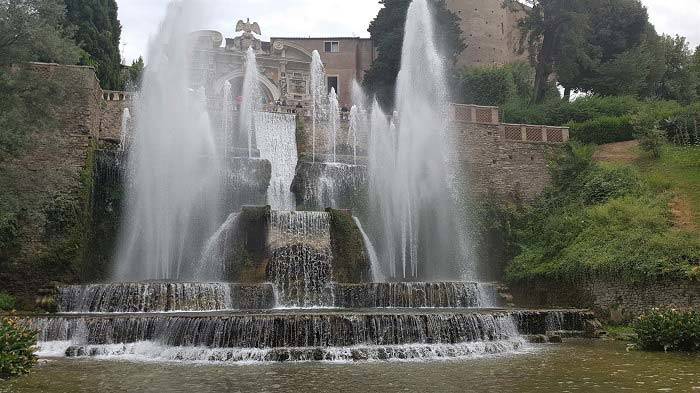
The Villa D’Este Gardens strongly influenced European Garden Design
Built a century before Versailles, Villa D’Este Gardens was a majestic project that ended up strongly influencing European garden design. Inspired by myths of the past, the garden was designed to enchant and captivate its visitors as soon as they stepped through the entrance, shaded by a beautiful pergola.
Cardinal Ippolito was, as were his contemporaries, fascinated by ancient Greek mythology that marked the classical era, and, in particular, the Labours of Hercules. Having in mind his passion for the Herculean myths, he found particular inspiration for the gardens of Villa D’Este in the tale of the Hesperides. As the ancient story goes, Hesperides or the three nymphs of the dusk, tend a magical garden where an apple tree grew whose golden fruit granted immortality. Although the task to recreate a mythical, otherworldly garden might have seemed an impossible feat, the marvellous Villa D’Este Gardens stands as testimony to Ippolito’s ethereal, fairy tale vision.
The romantic and mystical beauty of these lavish gardens is enhanced by numerous fountains and water features, as well as magnificent statues, both ancient originals and replicas. Although the striking flora is not to be overlooked, the unique water features are probably the most prized legacy of the gardens. Among many exquisite fountains that can only be characterised as a true work of art, the most popular water features are The Fountain of the Owl, who, thanks to its marvellous and inventive design, produced organ music, and The Hundred Fountains and its canals, that beautifully line the promenade.
The extravagance of the spellbinding water features and statues is perfectly complemented by lush and soothing vegetation. Ideally suited to amplify the transcending beauty of the Villa D’Este Gardens without stealing the spotlight, centuries old Cypresses, citrus fruit trees and exotic evergreens create a spectacular backdrop to the many baroque works of art.
Alas, Cardinal Ippolito II never did manage to become Pope. However, thanks to his lofty ambition, he left the planet a beautiful legacy! I would strongly recommend a visit here to anybody who loves gardens, especially Mediterranean gardens and the Mannerist style of garden design, typical for Italy. The timeless beauty and the awe-inspiring water features of the Villa D’Este Gardens are definitely something to behold.
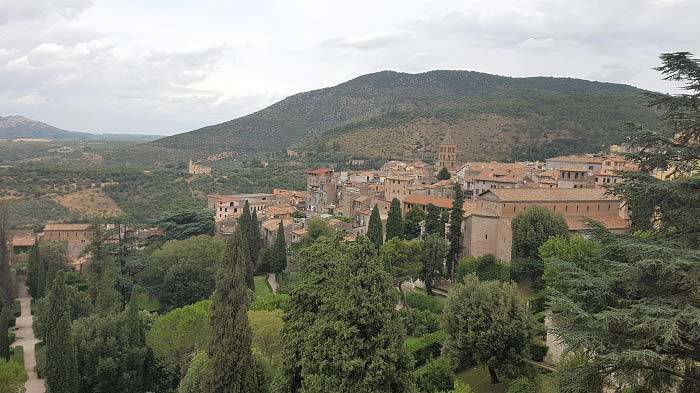
The Villa D’Este Palace & Gardens are a UNESCO world heritage site
If the look of the Villa D’Este Gardens inspires you, then visit Paramount Plants where our expert team are always on hand to help and advise. We specialise in mature architectural trees and shrubs. Many of our plants are ideal for Mediterranean themed gardens. All our trees and plants are available to buy online and can be delivered nationwide in the UK.
For more Italian gardens to visit, see also Isola Bella, Lake Maggiore.
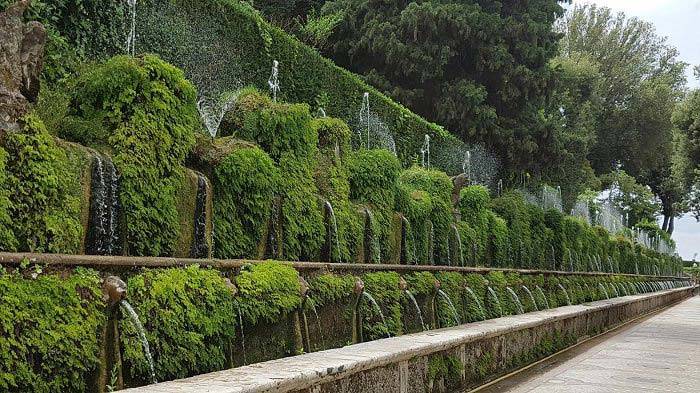
Villa D’Este Gardens 16th century Italian Renaissance gardens

